Australian Tropical Rainforest Plants - Online edition
Uvaria sankowskyi L.L.Zhou, Y.C.F.Zu & R.M.K.Saunders
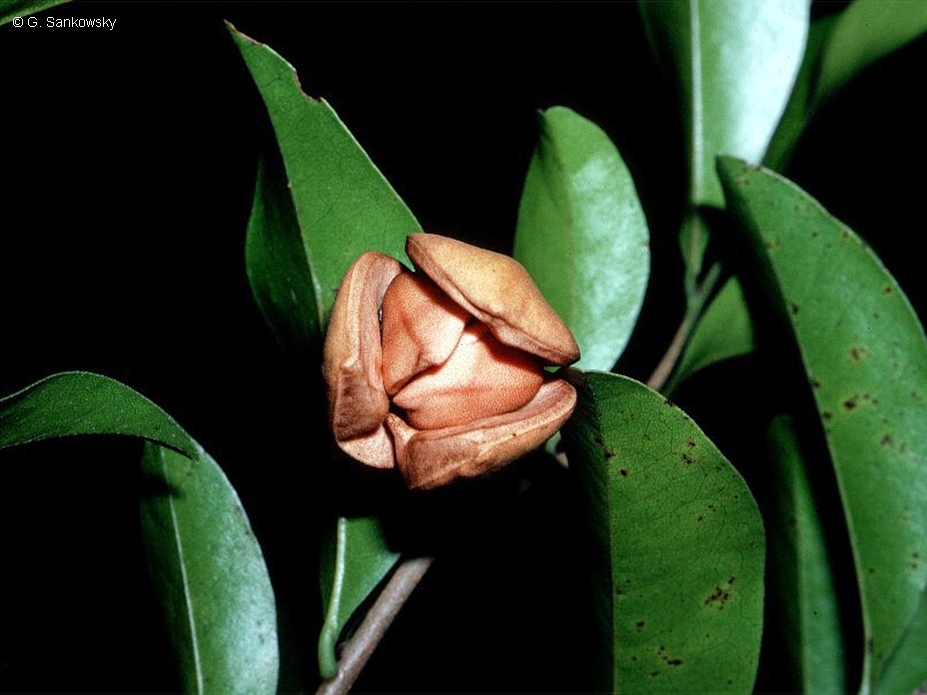
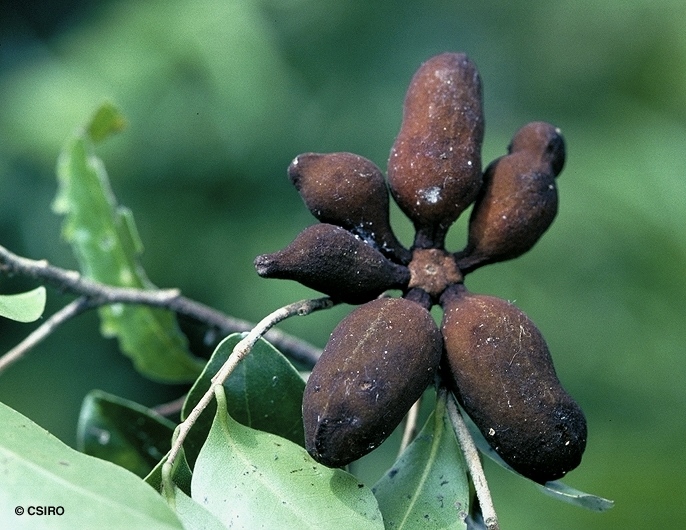
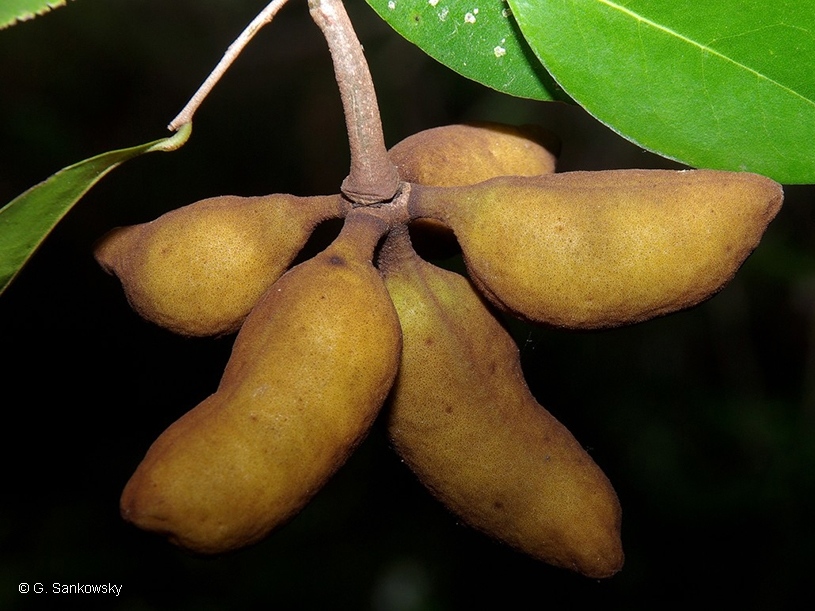


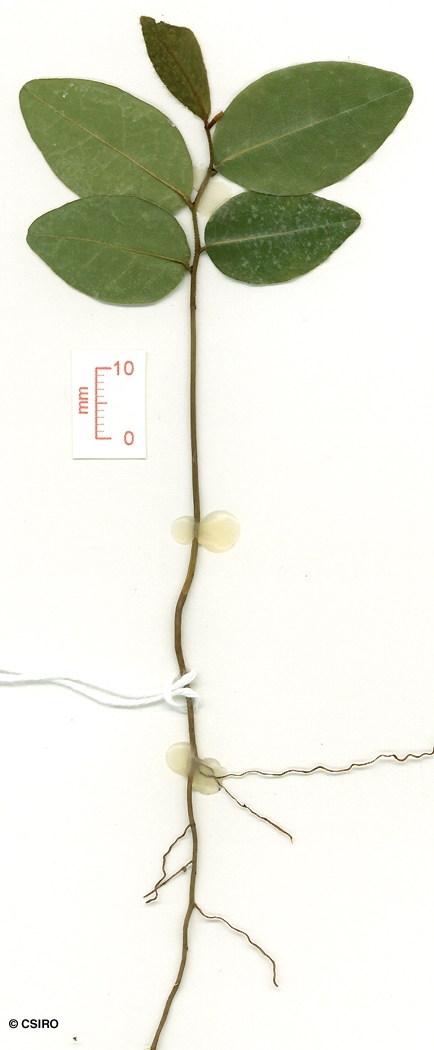
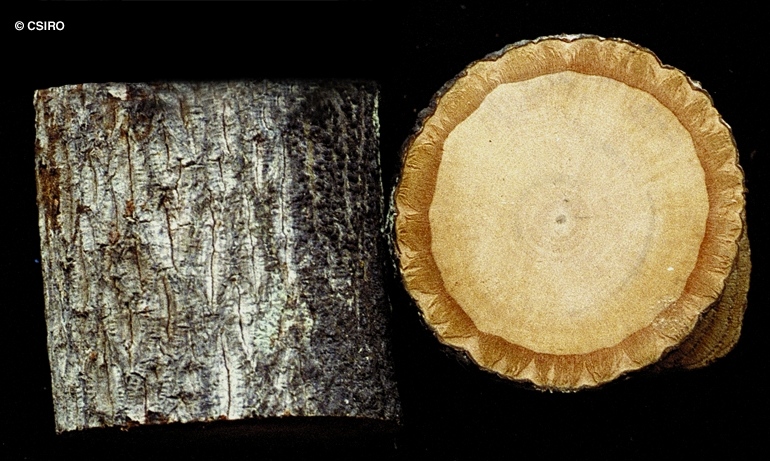
Zhou, L. Su, Y.C.F., Chalermglin, P. & Saunders, R.M.K. (2010) Botanical Journal of the Linnean Society 163: 39.
Usually grows as a tree- top vine, stem diameters to 5 cm recorded, but also flowers and fruits as a shrub. Blaze odour slightly aromatic and perhaps resembles that of pepper. Vascular rays rather fine but visible to the naked eye.
Leaf blades about 3-8.5 cm long, petioles about 0.1-0.4 cm long, grooved on the upper surface. Lateral veins about 10-14, often difficult to distinguish, forming inconspicuous loops well inside the blade margin. Very small oil dots just visible with a lens. Young shoots clothed in stellate scales. Leaves slightly aromatic when crushed. Fine oak grain visible in transverse sections of 4the twigs. Twig bark strong and fibrous when stripped. Tendrils are modified branches.
Flowers on very thick pedicels about 1.5-2 cm long. Flowers +/- globose, about 16-20 mm diam., opening only slightly and emitting a pleasant fruity odour. Calyx lobes about 6 mm long, velvety to the touch. Petals 3 + 3, in two whorls, outer whorl brown, velvety to the touch, inner whorl +/- orange. Anthers sessile, about 2 mm long, hooded at the apex and surrounding the carpels. Ovaries pink, 6-9 per flower. Stigmas pink, sessile, bifid at the apex.
Fruits dull orange brown, consisting of a number of carpels each densely clothed in short hairs. Fruiting carpels about 30-45 x 15-35 mm on a stalk about 5 mm long, each containing about 2-8 seeds. Seeds about 9-11 x 5-7 mm, testa brown. Embryo very small, straight, about 1.5 mm long, cotyledons straight, about 0.9 mm long, radicle straight about 0.5 mm long.
First pair of leaves ovate, subopposite, apex acute, base obtuse, shortly petiolate, oil dots visible with a lens. At the tenth leaf stage: leaves distichous, ovate to elliptic, apex acute to acuminate, base obtuse or acute, lateral veins forming loops well inside the blade margin. Upper surface of the leaf blade mainly glabrous, lower surface clothed in dark brown scattered stellate hairs. Crushed leaves emit a pleasant odour. Terminal buds and younger stems clothed in dark brown hairs, stellate hairs and scales. Seed germination time 138 to 704 days.
Endemic to Queensland, occurs in CYP, NEQ and CEQ. Altitudinal range from 500-700 m. Grows in monsoon forest and vine thickets among granite or basalt boulders.
Food plant for the larval stages of the Fourbar Swordtail, Green Spotted Triangle and the Pale Green Triangle Butterflies. Sankowsky & Neilsen (2000).
Melodorum crassipetalum Jessup, Flora of Australia 2: 448 (2007). Type: Queensland, cultivated at Tolga, ex Font Hills, Bakers Blue Mountain, 30 Oct. 1988, G. Sankowsky 957 & N. Sankowsky. Holo: BRI. Melodorum sp. (Font Hills GS 380), Names Distribution Queensland Plants, Algae Lichens : 16(2002).





